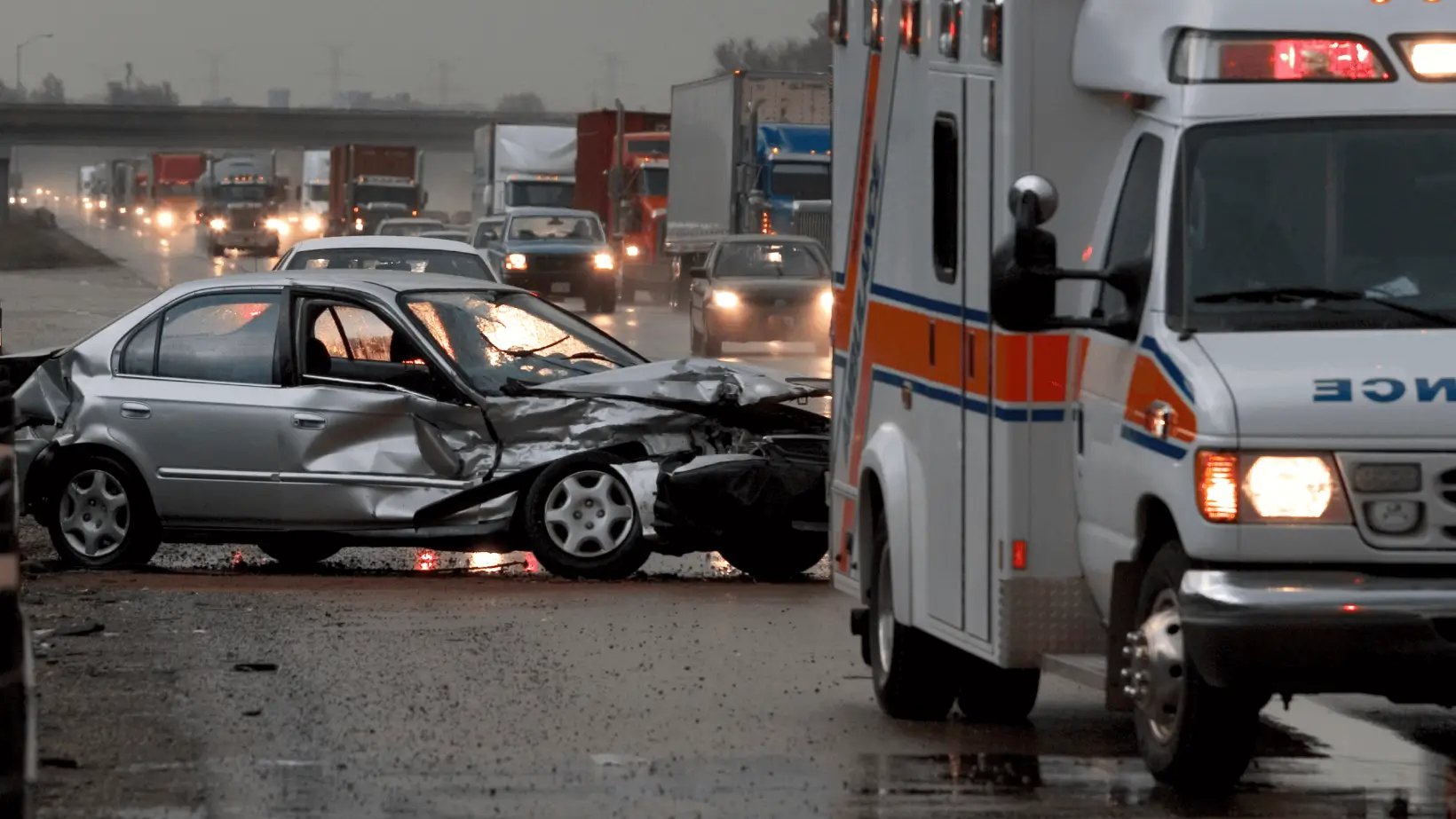Collisions involving a Police Car, Firetruck or Ambulance

In every personal injury case, your lawyers look at the risk relating to liability. Liability means who is at fault for the accident.
Where a collision involves an emergency vehicle, your lawyers need to look at what the law says about collisions with emergency vehicles.
The starting point is the Highway Traffic Act. Section 159 of the HTA essentially states that the driver, upon the approach of an emergency vehicle with its siren or lights on, shall immediately bring their vehicle to a standstill as near as practicable to the right-hand curb. In other words, the HTA put the onus on you to pull over if the lights or sirens were on.
Sometimes the evidence is conflicting. Our client might say the lights and sirens were off. The first responder might say they were on. If that happens, we will look for independent witnesses or traffic or other cameras to see if we can determine who is correct. If there is no external evidence if will be one party’s word against the other.
Some examples of cases involving first responders:
Case 1:
In Omiciuolo v. Thompson, an injured driver sued a police officer. The officer was on his way to attend a scene of another collision. The officer approached and entered a red-light intersection. The officer testified that he was driving a marked police cruiser and that all his vehicle’s emergency equipment was on, including sirens, strobe, and lights.
The officer said he stopped for more than two seconds at the red light, decided it was safe to proceed, and went through a red light. Other vehicles in the northbound lanes were stopped at the intersection, even though they had the green light. The southbound vehicles were also at a stop.
The injured driver’s vehicle entered the intersection on a green light and struck the police cruiser. An independent witness at the scene did see the police cruiser with its lights on, but stated that the siren was not on. This witness stated that there were no other cars in the southbound lane, where the injured driver was travelling.
Another independent witness stated that all traffic at the intersection had stopped to allow the fire truck and police cruiser through the intersection. This second witness could not recall whether the police cruiser’s lights were on, and could not immediately recall whether the siren was on. But his sense was that the siren was on because otherwise he would have no reason to remember the police cruiser coming from the rear.
A third witness, a police officer travelling behind the Defendant driver, saw the Defendant’s emergency lights activated, saw the vehicle stop before entering the red light intersection, and saw the cruiser brake in the moment before the collision.
The Court found that the Plaintiff’s right of way was “tempered by the rule with respect to emergency vehicles which requires him to immediately bring his vehicle to a standstill as near as practicable to the right hand curb of the intersection.”
Despite the conflicting evidence, the Court decided that the Plaintiff was 100% liable for causing the collision. In other words, that injured driver received zero compensation.
Case 2:
In City of Saint John v. City Transit Limited, there was a collision between a firetruck and a city bus. The bus was struck by the firetruck in the middle of an intersection. The driver of the bus didn’t hear the siren but other witnesses said it was on.
The trial judge found that the bus driver should have heard the siren and stopped at once.
The Court decided that the fire truck had the right of way. The Court agreed that the firetruck was speeding. The Court also decided the firetruck driver failed to keep a proper lookout.
Despite the speeding and not watching where he was going, the firetruck was only 40% at fault. The bus driver was deemed 60% at fault. That meant that the bus driver only got 40% of his damages.
Case 3:
In Gorman v. Meghji, a collision happened between a regular driver and an RCMP cruiser. In the moments before the collision, the injured driver saw one police cruiser enter the intersection, but did not hear the second cruiser’s approach. Three lay witnesses had seen the second cruiser car approaching the intersection and heard its siren. The Court decided that Mr. Meghji’s decision to drive through the intersection was negligent because he was aware of the possibility of a second emergency vehicle entering the intersection. The Court also found that the officer breached the standard of care of a reasonable police officer by speeding in a commercial and residential area at 90 km/hr over the speed limit. As you can imagine, that is a very high rate of speed. Because of the speed, the officer was found to be 80% liable, and the injured driver was 20% liable.
Case 4:
In Frers v. De Moulin, an on-duty police officer riding a motorcycle was struck by a mini van. The officer was pulling over another vehicle and was in a collision. Eleven witnesses were called at trial. The Court found that the officer’s lights and sirens were activated on his motor cycle. The officer entered the intersection on a red light. The Court decided that an alert driver would not have driven through the intersection in those circumstances. The Court decided that the officer had the right of way, was acting pursuant to his duties, and had his emergency lights on. Nevertheless, the Court held that the officer was 40% liable for the collision since he could have avoided the collision by the exercise of appropriate caution. The driver of the mini van was found to be 60% liable for the collision.
Case 5:
In Delalis v. Nepean, an officer was responding to an emergency call, ran a red light, and collided with the Plaintiff’s vehicle. The officer was driving at a high rate of speed towards a blind intersection. The police officer failed to stop at the red light, and instead chose to proceed through it. The Court decided that there was evidence that the Plaintiff looked left and right before entering the intersection. The Court accepted that the accident happened quickly and that the collision occurred within 1-2 seconds. The Plaintiff did not hear the siren, and that evidence was somewhat consistent with a lay witness. The lay witness saw the emergency lights on, but was not able to conclusive say whether the sirens were activated. The Court found that in the circumstances of this case, the Plaintiff was not able to avoid the collision and that the officer was liable for the collision.
The bottom line is that if the Court accepts that the lights or sirens were on, you will face a very significant reduction in your damages, that could be anywhere from 20% to 100%.
If you have had a serious collision involving a first responder reach out to the personal injury lawyers at Auger Hollingsworth at 1-888-574-4529.














